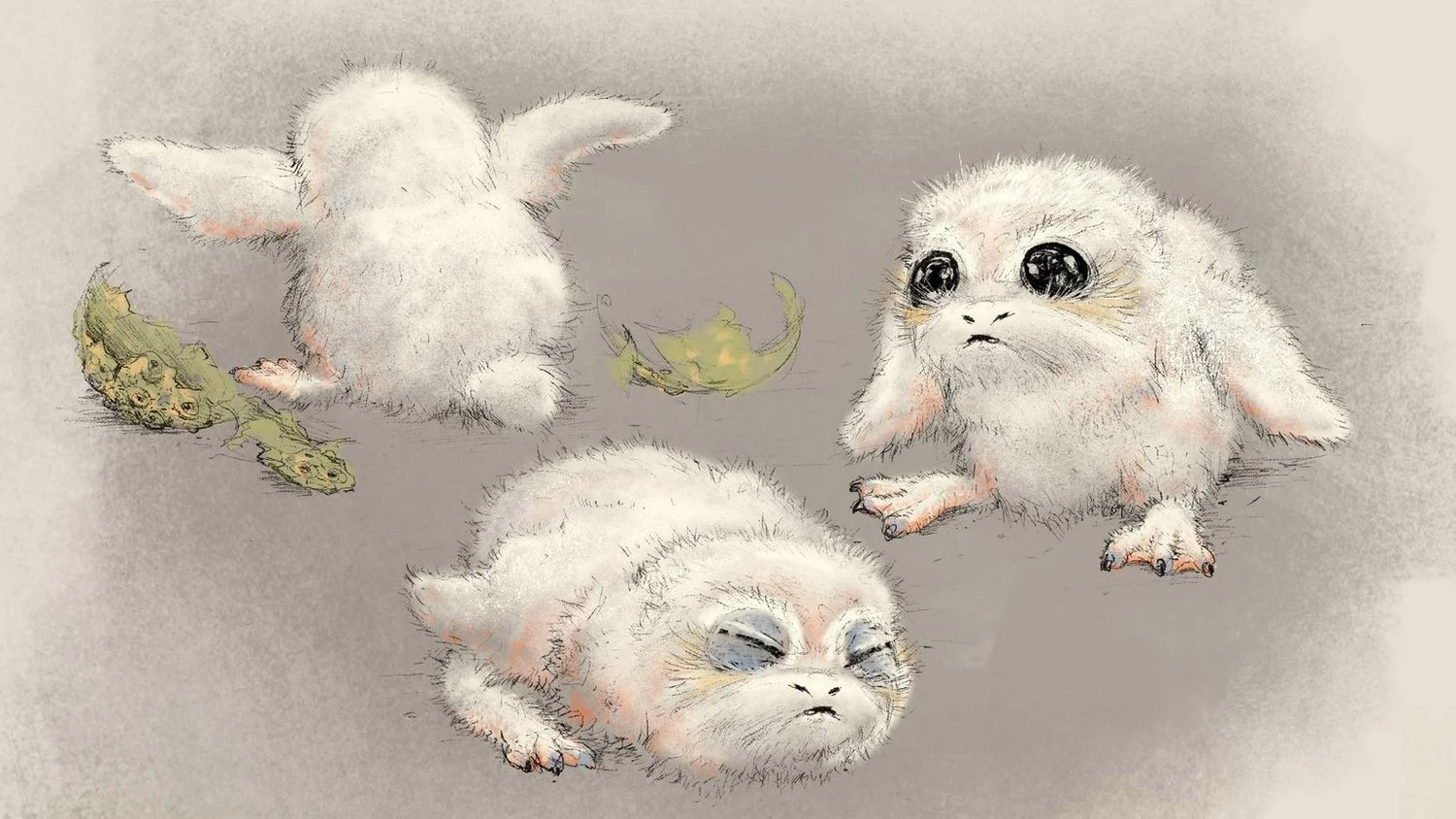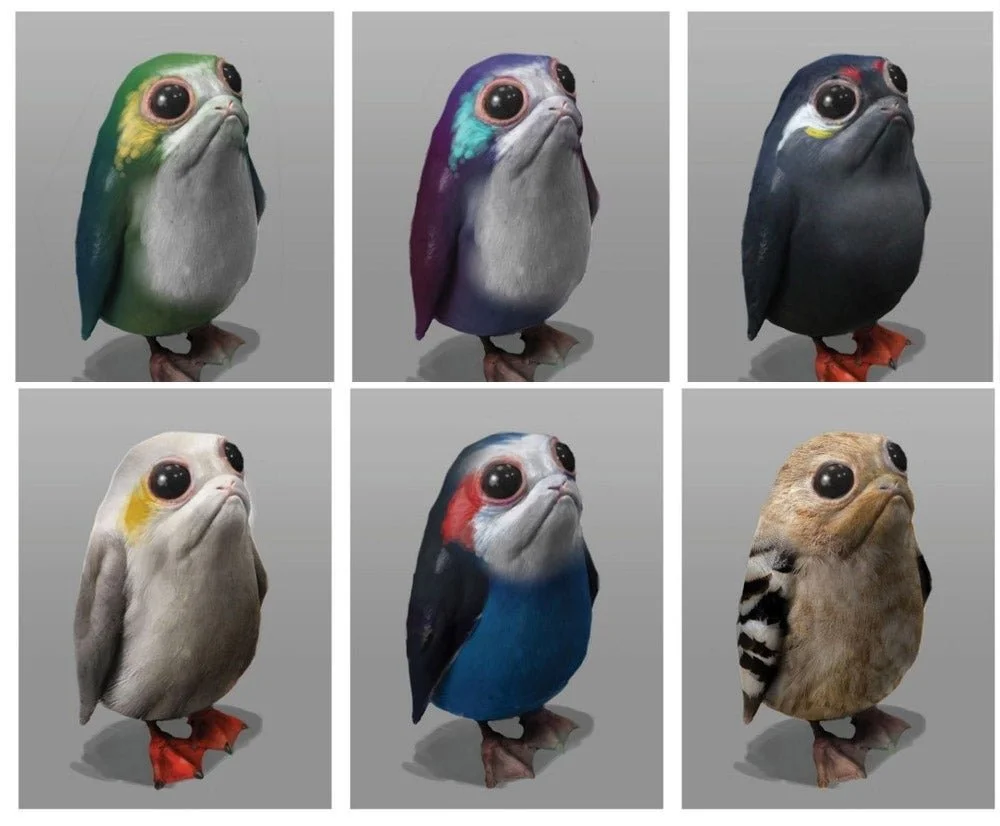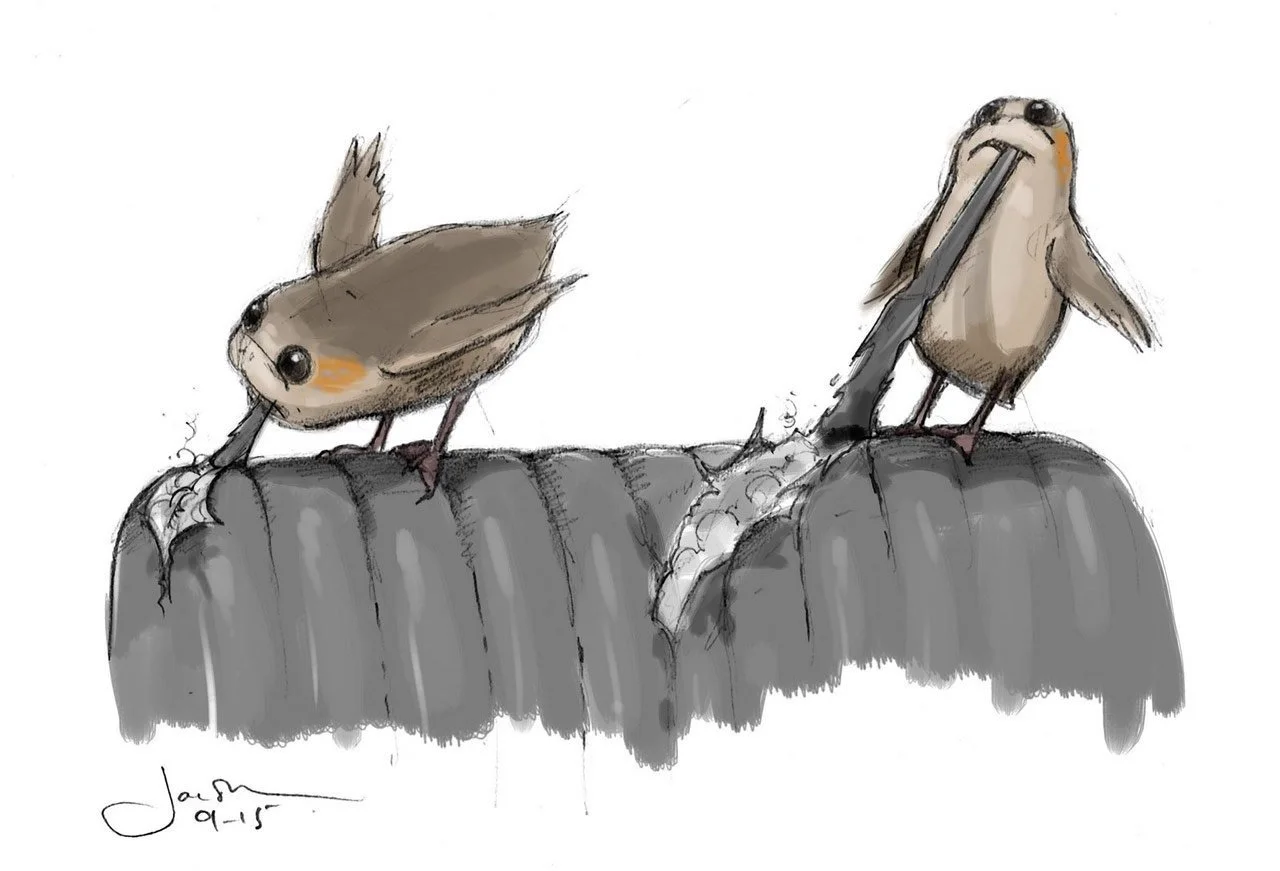The Real Reason Porgs Were In 'Star Wars'
After the launch of Star Wars: The Last Jedi, one squat figure seemed to be everywhere. Plushie Porgs lined up on supermarket shelves. They were plastered on t-shirts, Funko Pops, backpacks, and anything Etsy could think of. But Porgs were not just created for the merchandising possibilities. They were the solution to a problem on Ahch-To.
Protecting The Puffins
Luke’s hideaway is real-life Skellig Michael, an island in County Kerry, Ireland. But when this was chosen as the filming location for Star Wars: The Last Jedi, it came with wildlife; Puffins. The birds arrive in late spring (April), they have covered every ledge on the island, and are a protected species. Irish law says they cannot be disturbed when nesting. UNESCO had concerns about Star Wars filming during the delicate breeding season and asked for constant reports to ensure that the World Heritage Site was protected.
RELATED:
UNESCO feared that the birds would leave Skellig Michael if they were upset by excess noise or vibration from the crew, so the treatment of the Puffins was no small matter. The production team could not move them, and there would be too many to keep out of the shot. This left Rian Johnson with a problem.
Creating The Porgs
Rather than trying to individually delete every bird from the shot, he decided to create an indigenous species to CGI over the top. The job fell to Jake Lunt Davies and his team, with the obscure yet simple brief of ‘puffin people' . The shape of the Porgs had to be in proportion to the birds so they could place over them easily in post-production. But the Puffins were also the inspiration for the color scheme.
Lunt designed Porgs in different colors of a rainbow, similar to the Puffin’s beak. Over 50 different color options! Porgs could have easily been purple or green! Rian Johnson picked out aspects of the designs he liked, and the designers kept producing Porgs until they settled on a final design. Rian leaned towards more neutral colors based on the environment in Skellig Michael. However, the bright Puffin blue (from the beak) can still be seen in the blue around the eyes. The white around the stomach also echoes the white on the real-life rock-dwelling birds.
Keeping with the theme, to create the squawk of the Porg, the Skywalker Sound team looked to other avian family members. Coya Elliot, the first assistant, recorded the chickens at the studio, slowing down the sound to make it more alien. They also contacted a man who releases doves at weddings and used his birds along with a snippet of a turkey call from the archives for the final version.
Popular Porgs
Many creatures have been created for the Star Wars Universe; some remain glorified set dressing, but others step into the limelight. The small Porgs, created by necessity, were brought from the background of the movie into the forefront for comic relief in scenes where the mood may be morose for long periods of time. They quickly caught the imagination of fans. Lunt had no idea that his design would become so iconic. Porgs appealed to older and younger viewers with cute eyes and a quirky personality. In a poll from thedorkside.com, fans voted Porgs the most popular creature from Star Wars: The Last Jedi. They even beat the mighty Vulptex!
There’s one thing to bear in mind next time you watch Luke Skywalker brooding on his rocky island. Some of the Porgs in the background are real birds. Imagine how incredible it must have been for Mark Hamil and Daisy Ridley to film on such an unspoiled and diverse island.
READ NEXT:
Source(s): StarWars, BBC, dorksideoftheforce





